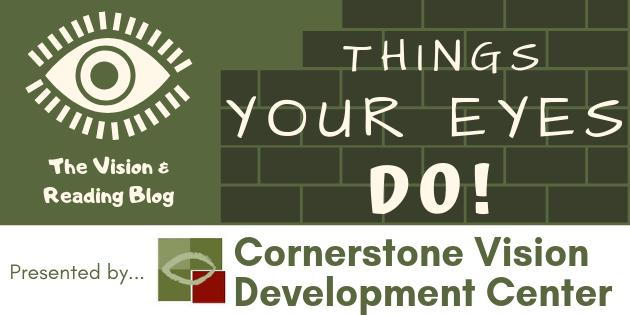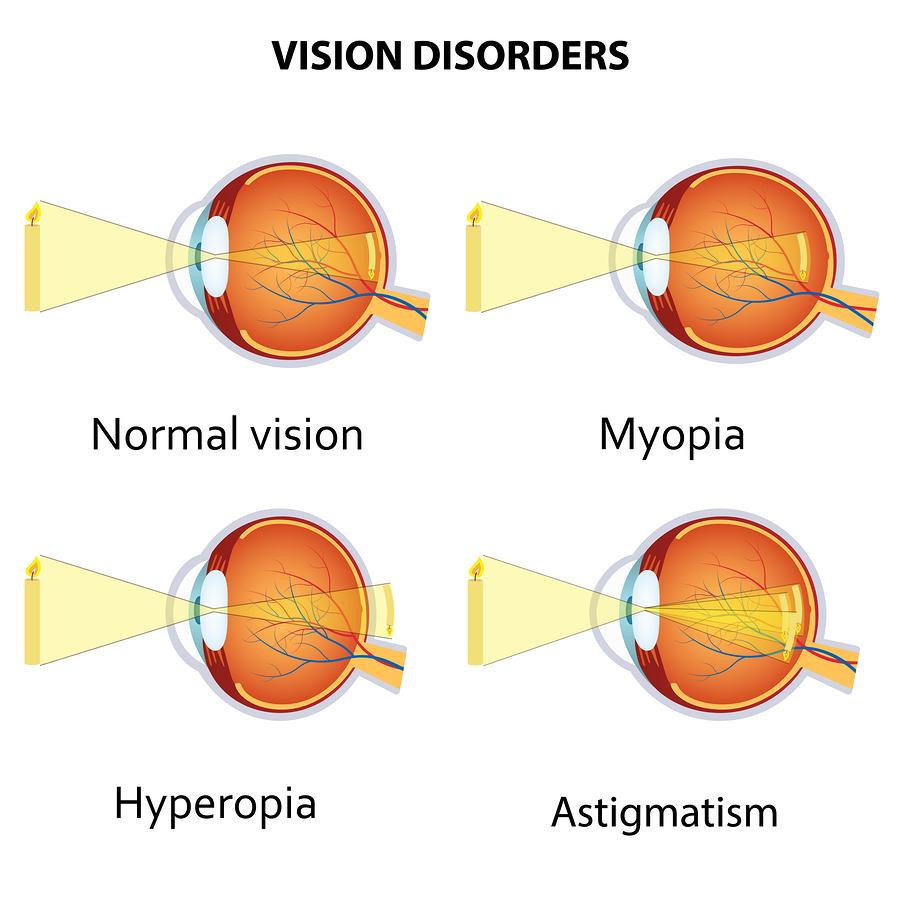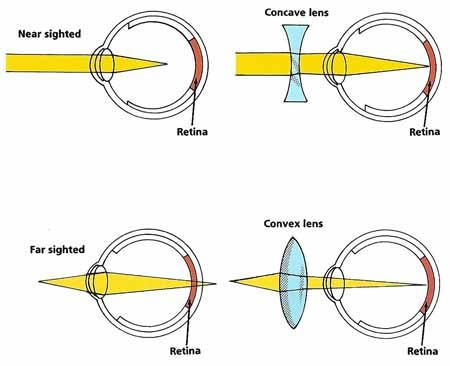
Last time, I ended my post with three fancy words used by eye clinics: hyperopia, myopia, and astigmatism. I’d like to start out by defining these terms and clearing up any confusion about a couple commonly-used synonyms: farsightedness and nearsightedness.

...
Eye clinics like to joke that we’re the only medical profession that gives you a diagnosis based on what you can do instead of what the problem is:
Hyperopia: this is our fancy word for “far-sightedness.” You might be able to see clearly at further distances, but too much of this, and you’ll have trouble seeing up close. (To bring it back from last time, the light rays are falling too far back behind the retina to be focused.)
Myopia: “near-sightedness.” Up close is no problem, but golly, does it get blurrier the further away things get! And we myopes HATE blur. (The light rays are bent too much in front of the retina to be focused.)
Then there’s this bear of a word:
Astigmatism: I have no layman term for this; it basically says, “your eye is odd, and the light rays are getting all mixed up.” (Really, though: the cornea or lens is shaped in such a way that it distorts where light falls in a disorganized fashion onto the retina.
...
**Did you know?
It’s a common mistake for someone to think they’ve been diagnosed with “a stigmatism” since it sounds the same as “astigmatism”. The word’s origin is dependent on the a-“without” combined with stigma- “point.”
Astigmatism = being without focal point.
Now you know!
(Oh, dear. Channeling Bill Nye from my elementary years…)
...
Ok. Back on track.
It’s old news that eye doctors prescribe lenses (glasses or contacts) to do the light-bending work for people that have a refractive error consisting of one or more of these diagnoses. The more trouble your eye has bending light accurately, the higher the number in your prescription.
Oooh! Prescriptions! Have you ever wondered what the numbers and symbols on your glasses or contacts mean? Let’s get into that a little today.
For far-sightedness, you get a lens prescription with a plus (+), for nearsightedness, a minus (-). These indicators determine the type of lens you’re getting: a convex (+) or concave (-) lens. Each bends light differently:
A plus lens helps to pull the rays that fall too far back into focus on the retina.
A minus lens sends them further back to hit that same sweet spot.

...
Astigmatism is a bit different. Not only do you have the +/- part, but they also have the fit the irregularity and know how it’s oriented on your eye. Weird, right?
Here’s an example: the prescription for my right eye looks like this:
-6.00 -1.25 x 130
(Those who know: terrible, right?)
The first number says I’m getting a (very thick) concave lens for my severe nearsightedness. (Without my glasses or contacts, I have to place things 4 inches from my eyes to make them more-or-less clear. Blech.)
I also have a substantial astigmatic irregularity: that’s what the second number is there to correct. The last number indicates the "tilt" of my astigmatism so my glasses make the light rays line up just right.
I won’t be too disappointed when I develop cataracts someday and they replace my current lens with something that does its job a bit better. Lol. (They totally can do that, though. I know: “Whaaa??!” Read more about these intraocular lens implants post-cataract surgery here: https://www.aao.org/eye-health/diseases/cataracts-iol-implants).
…
Just to review: what’s that Thing Your Eyes DO! again? That’s right:
Your eyes REFRACT;
They bend light.
The solution for errors of refraction again? Glasses! (Or contacts!)
“Wait a hot second!” You might say, “I thought you promoted vision therapy in this blog. Can’t you teach me to fix it without needing a prescription the rest of my life?”
You’re right: this solution is pretty unique to what the rest of my blog posts are going to look like. It’s true that vision therapy is a viable option to making sure you don’t progress rapidly into higher and higher prescription like many nearsighted people do. In our office, we nickname this "eating minus." (Again. Me. If I only would’ve known.)
And there are unique diagnoses that go around masquerading as refraction problems (lazy eye, anyone?) that are not fully corrected with lenses or traditional patching, and to which therapy is an effective, viable option.
However, it doesn’t eliminate the need for lens prescriptions altogether. So, it's your choice for correction: get on the style train and pick a pair of frames or go for the more discrete contact lenses. No one here is judging your clarity crutch!
…
Next time, I’ll be starting some posts on eye movements and their importance in reading, driving, “keeping your eye on the ball” and more. Can’t wait!
~ The VT Geek
Shannon Gerber, Certified Optometric Vision Therapist
